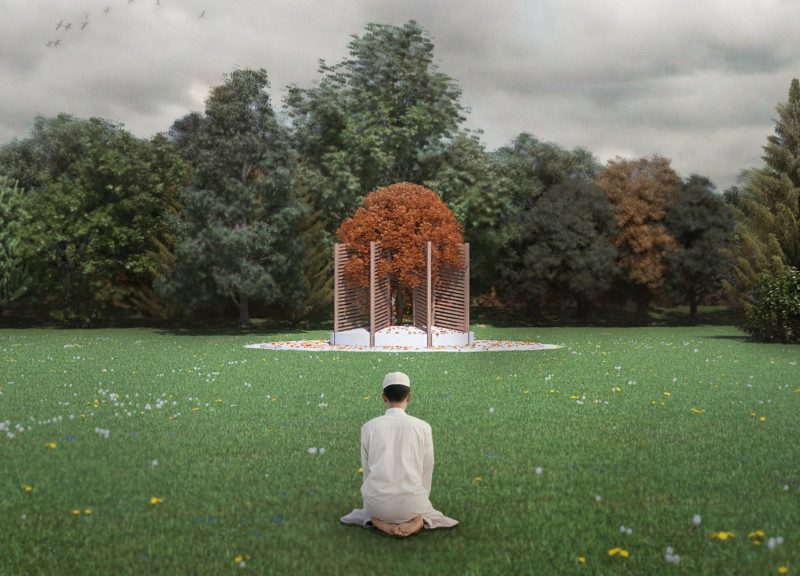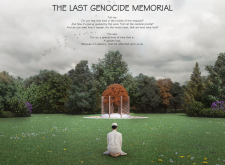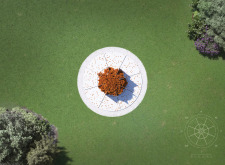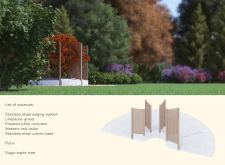5 key facts about this project
The architectural design titled "The Last Genocide Memorial" serves as a place of remembrance and reflection regarding historical tragedies. Situated within a landscaped area, this project harmonizes natural elements with structural form to create an accessible and contemplative space. The design focuses on the integration of a central sugar maple tree, chosen for its symbolic representation of resilience and the cyclical nature of life. The layout and materiality of the project are carefully crafted to facilitate both individual contemplation and communal gathering, emphasizing a narrative that resonates with visitors.
Symbolism and Function
The memorial is designed to evoke emotions tied to remembrance and healing. The central tree is flanked by carefully arranged landscaping, including native flora that complements the regional ecosystem. The surrounding elements, made from materials such as polished white concrete and Western red cedar, promote a natural aesthetic that encourages connection with the environment. This architectural approach differentiates "The Last Genocide Memorial" from traditional memorials, which often rely on stark forms.
The function of the project extends beyond commemoration; it serves as a space for collective mourning and personal reflection. Visitors are guided through a circular path that encourages exploration and engagement with the memorial's elements. Notably, the inclusion of radiating panels allows for intimate spaces while maintaining an open environment. This spatial arrangement promotes both individual contemplation and shared experiences among visitors.
Unique Design Approaches
The architectural design utilizes a blend of natural and constructed elements, fostering a sense of unity rather than division. The use of local materials reflects commitment to sustainability and environmental stewardship, reinforcing the memorial's connection to the surrounding landscape. The incorporation of poetic narratives enhances the design's emotional depth, inviting visitors to engage with the history being commemorated.
A notable aspect of this project is its emphasis on integrative design. The seamless connection between built structures and landscaping not only enhances the aesthetic quality of the space but also symbolizes the interconnectedness of life and memory. The thoughtful arrangement of spaces encourages visitors to engage with the memorial at their own pace, promoting personal interpretation of the experiences it represents.
For those interested in exploring the detailed aspects of this project further, including architectural plans, sections, and design concepts, please review the presentation of the memorial. Examining these elements will provide a deeper understanding of the architectural intentions and the unique qualities that distinguish this project.

























